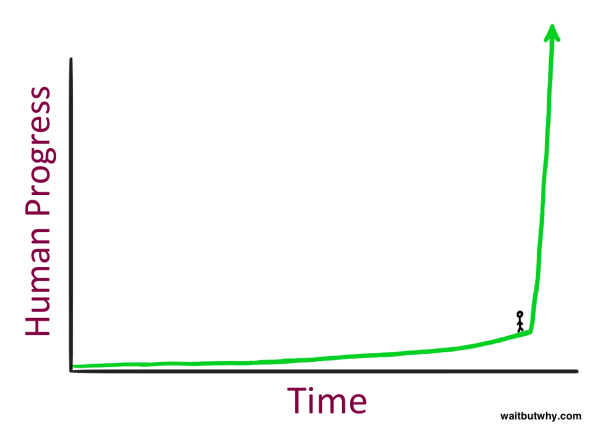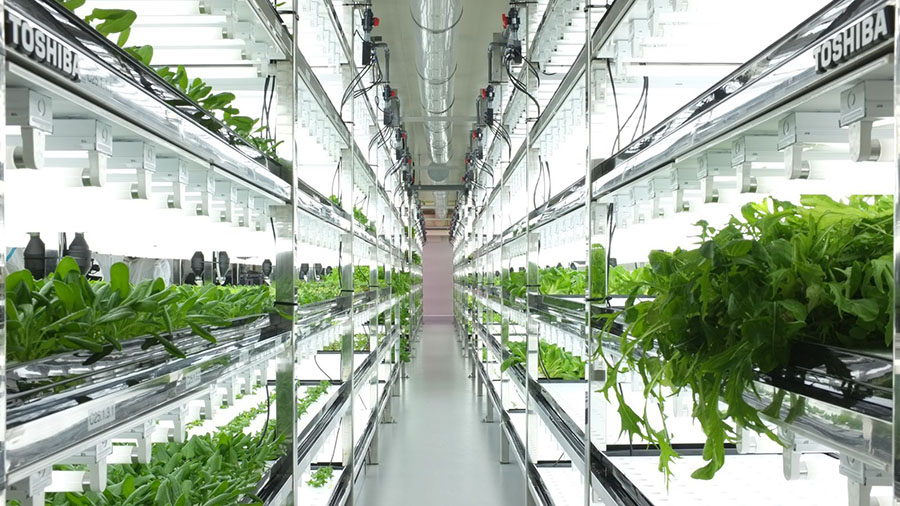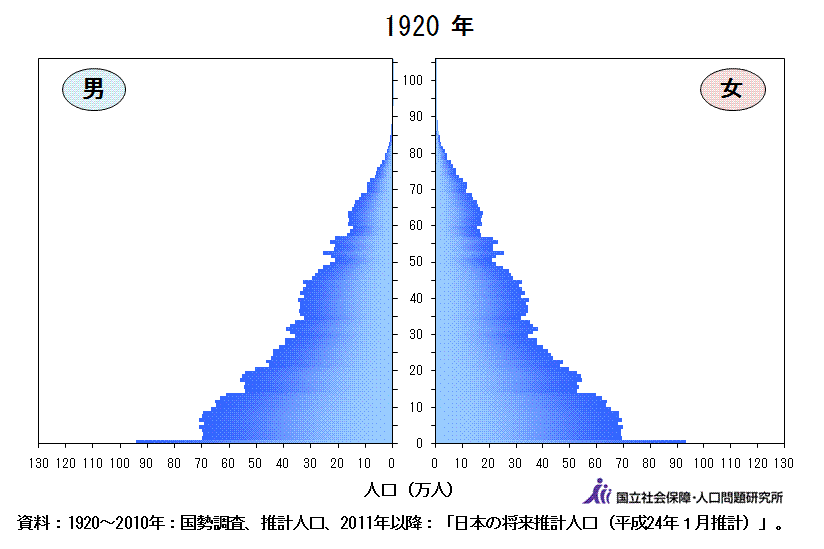Things tagged future:
This Tiny Country Feeds the World
Frank Viviano in Nat Geo:
The Netherlands is a small, densely populated country, with more than 1,300 inhabitants per square mile. It’s bereft of almost every resource long thought to be necessary for large-scale agriculture. Yet it’s the globe’s number two exporter of food as measured by value, second only to the United States, which has 270 times its landmass. How on Earth have the Dutch done it?
Economics of AI
On 13-14 September, 2017, we held our inaugural conference in Toronto to set the research agenda on The Economics of AI.
Paper presentations are good, but holy shit the comments are amazing.
Check the conference site for the papers and slides.
Cognition Builders: Extreme Parenting For The One Percent
Kim Brooks in The Cut:
The company was called Cognition Builders, and Harris explained that they would send people to a family for a period of weeks to observe everyone’s behavior and to figure out how parents could get better control over their kids. The people they sent were called “family architects.” They’d move in with a family for months at a time, immersing themselves in their routines and rituals. The family architects were the foot soldiers in the Cognition Builders team, but the most critical part of the company’s strategy involved the installation of a series of Nest Cams with microphones all around the house, which enabled round-the-clock observation and interaction in real time. At the end of each day, the architects would send the parents extensive emails and texts summarizing what they’d seen, which they’d use to develop a system of rules for the family to implement at home. Over time, the role of the family architects would evolve from observing to enforcing the rules.
One line that stood out to me was a throwaway from the writer about being a combo of life-coaching with Amazon Echo. But, think for a minute what life is like when the AI’s can parent like this. Robo-nannies will change the world.
A Model of Technological Unemployment
There is a bit of a backlash against UBI in the economics community at the moment, which I think is unfortunately due to a lack of awareness of potential changes to the labor market coming. Here is a paper by Daniel Susskind talking about why mainstream economics may have it wrong on the labor issues:
The economic literature that explores the consequences of technological change on the labour market tends to support an optimistic view about the threat of automation. In the more recent ‘task-based’ literature, this optimism has typically relied on the existence of firm limits to the capabilities of new systems and machines. Yet these limits have often turned out to be misplaced. In this paper, rather than try to identify new limits, I build a new model based on a very simple claim – that new technologies will be able to perform more types of tasks in the future. I call this ‘task encroachment’. To explore this process, I use a new distinction between two types of capital – ‘complementing’ capital, or ’c-capital’, and ‘substituting’ capital, or ‘s-capital’. As the quantity and productivity of s-capital increases, it erodes the set of tasks in which labour is complemented by c-capital. In a static version of the model, this process drives down relative wages and the labour share of income. In a dynamic model, as s-capital is accumulated, labour is driven out the economy and wages decline to zero. In the limit, labour is fully immiserated and ‘technological unemployment’ follows.
Personally I see huge changes coming in the near to medium term (5-40 years), such by the end of that about 40% of currently employed population will have no jobs available to them. (If minimum wage laws hold, that would be literately no jobs, if minimum wage laws fall, then it means jobs that pay only sustenance level). That will cause major changes to the economy of course. Goods will be produced at much lower cost, but how will people who don’t have jobs buy them? This is where UBI begins to make sense to me.
Then in medium to long term we have the potential of AI singularity, in which case, who knows. Even if no singularity, the automation encroachment on refuge labor will continue …
Via MR.
The Future of Cities
A scattershot short docu on youtube by Oscar Boyson, but a decent intro to lots of things I think about:
Megacities: Urban Future, the Emerging Complexity - A Pentagon Video
According to a startling Pentagon video obtained by The Intercept, the future of global cities will be an amalgam of the settings of “Escape from New York” and “Robocop” — with dashes of the “Warriors” and “Divergent” thrown in.
Secret Cameras Record Baltimore’s Every Move From Above
Monte Reel in Bloomberg Businessweek:
Pritchett had no idea that as he spoke, a small Cessna airplane equipped with a sophisticated array of cameras was circling Baltimore at roughly the same altitude as the massing clouds. The plane’s wide-angle cameras captured an area of roughly 30 square miles and continuously transmitted real-time images to analysts on the ground. The footage from the plane was instantly archived and stored on massive hard drives, allowing analysts to review it weeks later if necessary.
Since the beginning of the year, the Baltimore Police Department had been using the plane to investigate all sorts of crimes, from property thefts to shootings. The Cessna sometimes flew above the city for as many as 10 hours a day, and the public had no idea it was there.
The city wide panopticon that can solve crimes by rewinding time.
Google’s AI Wins Pivotal Game Two In Match With Go Grandmaster
Cade Metz in Wired: (link is to archive.is, due to Wired’s invasive advertising)
After more than four hours of tight play and a rapid-fire endgame, Google’s artificially intelligent Go-playing computer system has won a second contest against grandmaster Lee Sedol, taking a two-games-to-none lead in their historic best-of-five match in downtown Seoul.
This is extremely surprising, as as of a year ago, an high-average amateur player could beat any computer at go. Then 6 months ago, Google’s program beat a 2-dan pro, which was a shock to everyone, and now it seems to be handling a 9-dan pro, which is the top level of go ranking.
Britcoin or Brit-PESA?
Some high level mulling of a very smart person about the future of digital currency, as relates to the involvment of central banks:
Dave Birch in Consult Hyperion’s blog:
So: imagine something like M-PESA but run by the Bank of England. Everyone has an account and you can transfer money from one account to another by a mobile phone app (that uses the secure TEE in modern mobile phones) or by logging in with two factor authentication to any one of a number of service providers that use the Bank of England API to access the accounts or by phoning a voice recognition and authentication service. Drawing on our experiences from M-PESA, TAP and other population-scale mobile-centric system that we have advised on, I think that this API might actually the most important single thing that a Brit-PESA might deliver to the British economy.
The WELL: Bruce Sterling & Jon Lebkowsky: State of the World 2016
In January 2000 Jon Lebkowsky interviewed Bruce Sterling here in Inkwell about “The Viridian Future,” and in 2001 about “The State of the Future.” 2002’s discussion was called “State of the Whirled,” followed in 2003 by a discussion inspired by Bruce’s nonfiction book, “Tomorrow Now: Envisioning the Next 50 Years.” In 2004, we had the “Bruce Sterling State of the World Address,” and thereafter we called it the “State of the World” conversation.
Pundits abound, speaking with real or fabricated authority on a variety of subjects, and as the year turns spewing top ten lists and year-end summaries, and confident but subjective prognostications about the next year or five. If you’re bored with that sort of thing, you might find this two-week conversation more fun, interesting, and compelling. Our speakers are not creating keyword-rich listicles to maximize hits and produce conversions… but discussing the “state of the world” based on their perspectives as future-focused mavens immersed in information and contemporary culture.
Bruce Sterling’s perspectives are especially interesting given his global perspective as someone who travels and reports broadly, and his experiences as an author, speaker, teacher and maker attentive to trends in science, culture, politics, and design. He’s known a novelist, journalist and speaker. While acting as “Visionary in Residence” at Art Center College of Design in 2008, he wrote “Shaping Things,” one of the first books about the Internet of Things. In 2008 he was the curator of the Share Festival in Turin, on the theme of Italian digital manufacturing. He was one of the original columnists for Make magazine and wrote the cover story for the first issue of WIRED. Bruce Sterling lives in Turin, Belgrade and Austin. http://casajasmina.arduino.cc/team/
Jon Lebkowsky has been making and sharing experiences in digital culture and media for over 25 years. Currently he’s part of Polycot Associates, a mission-driven digital development co-operative based in Austin, Texas. He’s also President of EFF-Austin, an organization that’s been supporting digital freedom in Texas since 1990. He’s been an activist, sometimes journalist, and blogger who writes about the future of the Internet, digital culture, media, and society. http://weblogsky.com
Miami is sinking beneath the sea—but not without a fight
Stan Cox and Paul Cox in the New Republic:
Few people we talked with in Miami believed that the city they all know and love would remain intact into the deep future. The question was not whether people will have to leave but when. When people ask Stoddard, “When should I think about selling my house?” he said he tells them, “It depends on whether or not you can afford to lose the capital in it. What happens to you? Are you ruined financially? It’s a question of risk tolerance. If you can afford to lose the capital in your house, keep it. Enjoy yourself! But if you’re counting on that house for retirement, or if you’ll end up destitute if you lose it, I say now would be a good time to sell your place.”
Via Next Draft.
The Artificial Intelligence Revolution
Tim Urban with a decent, if pop-sci, look at the singularity:
What does it feel like to stand here?
Sebastian Seung’s Quest to Map the Human Brain
Gareth Cook in the NYT:
The race to map the connectome has hardly left the starting line, with only modest funding from the federal government and initial experiments confined to the brains of laboratory animals like fruit flies and mice. But it’s an endeavor heavy with moral and philosophical implications, because to map a human connectome would be, Seung has argued, to capture a person’s very essence: every memory, every skill, every passion. When the brain isn’t wired properly, it can lead to disorders like autism and schizophrenia — “connectopathies” that could be revealed in the map, perhaps suggesting treatments. And if science were to gain the power to record and store connectomes, then it would be natural to speculate, as Seung and others have, that technology might some day enable a recording to play again, thereby reanimating a human consciousness. The mapping of connectomes, its most zealous proponents believe, would confer nothing less than immortality.
The Dominant Life Form in the Cosmos Is Probably Superintelligent Robots
We are the bootloader.
“As soon as a civilization invents radio, they’re within fifty years of computers, then, probably, only another fifty to a hundred years from inventing AI,” Shostak said. “At that point, soft, squishy brains become an outdated model.”
Will We Build Colonies That Float Over Venus Like Buckminster Fuller's "Cloud Nine"?
Robert Walker at Science 2.0:
This idea dates back to the Russians in the early 1970s. The surface of Venus is far too hot, and the atmosphere too dense, for Earth life. However, our air is a lifting gas on Venus with about half the lifting power of helium on Earth. A habitat filled with normal air will float high in the dense Venus atmosphere, The atmospheric pressure there is the same as Earth sea level (1 bar). Temperatures are perfect for Earth life too, just over 0°C.
Also, just as weather balloons naturally rise to their operating level high in our atmosphere - so it works in the same way for our habitats on Venus. They float at a level where the pressure is equal inside and out, and can be of light construction. It is arguably the most hospitable region for humanity in our solar system, outside of Earth itself.
Toshiba’s high-tech grow rooms are churning out lettuce that never needs washing
Dan Frommer in Quartz:
Toshiba, the Japanese technology conglomerate with a lineage dating back to the 19th century, is looking for growth in a whole new way. In a sterilized clean room about 35 miles outside of Tokyo, where Toshiba used to make floppy disks in the 1980s and 90s, the company is now starting to grow thousands of lettuce plants as it expands into indoor agriculture.
Van Jacobson speaks on Content Centric Networking
Nerd out time. Gets really good towards end of part 3.
The Named Data Networking (NDN) project makes use of the CCN (Content-Centric Networking) architecture developed at the Palo Alto Research Center (PARC). In this presentation, Van Jacobson speaks on content-centric networking at the Future Internet Summer School (FISS 09) in Bremen, Germany in June 2009.
The Social Laboratory
In October 2002, Peter Ho, the permanent secretary of defense for the tiny island city-state of Singapore, paid a visit to the offices of the Defense Advanced Research Projects Agency (DARPA), the U.S. Defense Department’s R&D outfit best known for developing the M16 rifle, stealth aircraft technology, and the Internet. Ho didn’t want to talk about military hardware. Rather, he had made the daylong plane trip to meet with retired Navy Rear Adm. John Poindexter, one of DARPA’s then-senior program directors and a former national security advisor to President Ronald Reagan. Ho had heard that Poindexter was running a novel experiment to harness enormous amounts of electronic information and analyze it for patterns of suspicious activity – mainly potential terrorist attacks.



